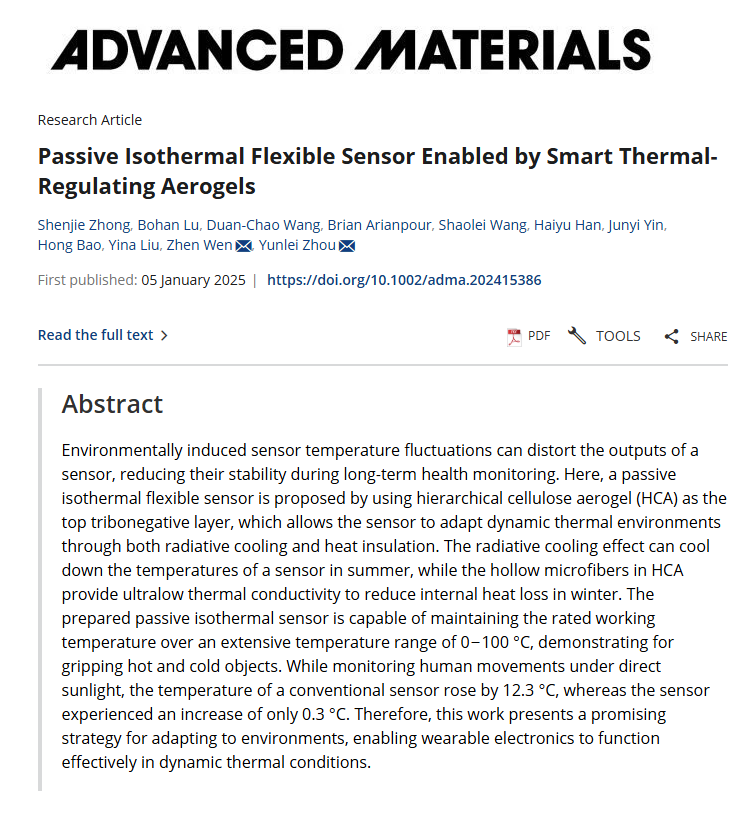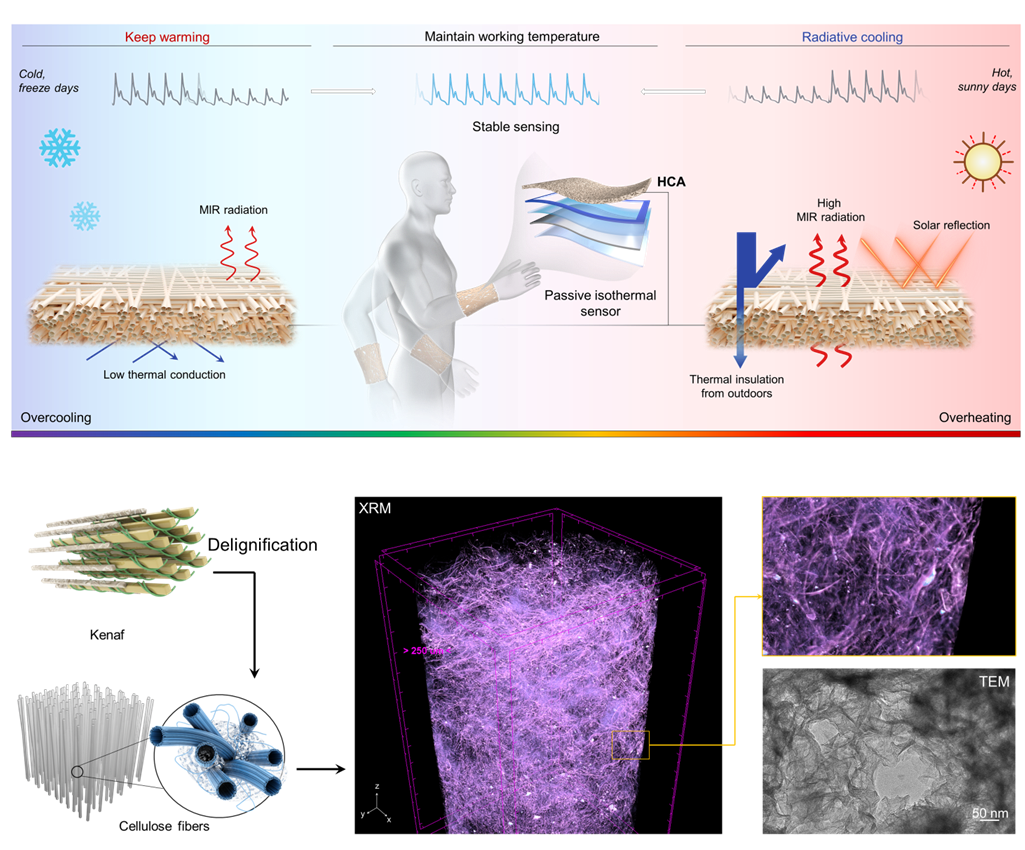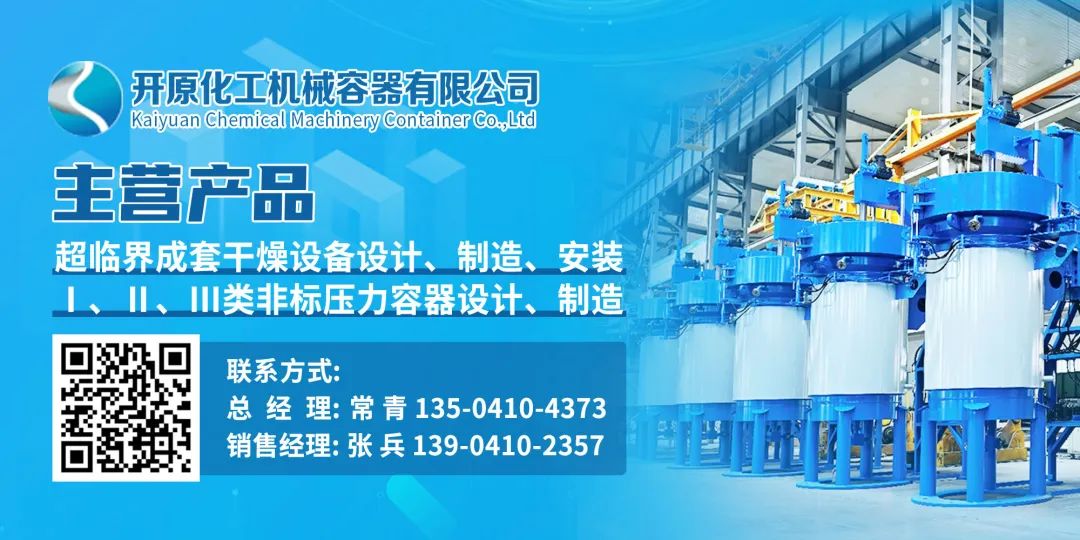
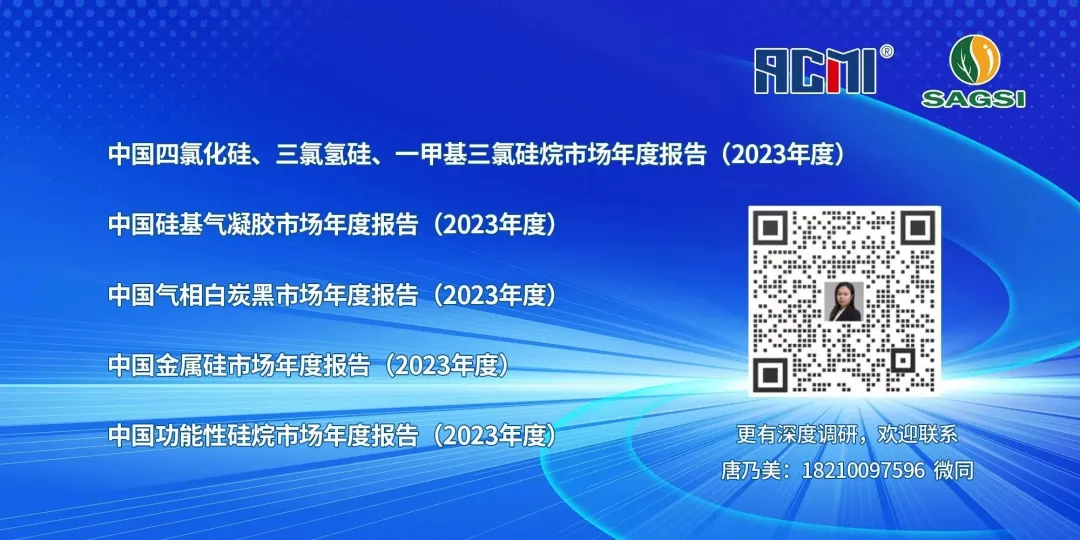 ■ Source of Information: Xi’an University of Electronic Science and Technology Technology Transfer Center
Recently, the Automotive Electronics Research Institute of the Hangzhou Research Institute published a research paper titled“Passive Isothermal Flexible Sensor Enabled by Smart Thermal-Regulating Aerogels” in the international top journal Advanced Materials (impact factor 27.4). The research uses smart thermal-regulating aerogels to construct a passive isothermal flexible sensor with environmental adaptability, achieving long-term monitoring stability of flexible sensors in dynamic thermal environments..
Postdoctoral researcher Zhong Shenjie and doctoral student Lu Bohan from Xi’an Jiaotong-Liverpool University are co-first authors of the paper, with the Hangzhou Research Institute of Xi’an University of Electronic Science and Technology as the first author unit. The collaborating institutions also include Zhejiang University, University of California, Los Angeles, and Soochow University.
■ Source of Information: Xi’an University of Electronic Science and Technology Technology Transfer Center
Recently, the Automotive Electronics Research Institute of the Hangzhou Research Institute published a research paper titled“Passive Isothermal Flexible Sensor Enabled by Smart Thermal-Regulating Aerogels” in the international top journal Advanced Materials (impact factor 27.4). The research uses smart thermal-regulating aerogels to construct a passive isothermal flexible sensor with environmental adaptability, achieving long-term monitoring stability of flexible sensors in dynamic thermal environments..
Postdoctoral researcher Zhong Shenjie and doctoral student Lu Bohan from Xi’an Jiaotong-Liverpool University are co-first authors of the paper, with the Hangzhou Research Institute of Xi’an University of Electronic Science and Technology as the first author unit. The collaborating institutions also include Zhejiang University, University of California, Los Angeles, and Soochow University.
▲ Click “Read the Original” at the end of the article to view the original paper
In general, flexible sensors are mostly composed of polymer substrates, making them highly sensitive to environmental fluctuations and prone to unstable sensing output performance.
To address this issue, Passive Daytime Radiative Cooling (PDRC) has been proposed, which is a new cooling method that requires no energy input. It primarily works by effectively reflecting solar radiation (0.3-2.5 μm band) and radiating heat to the cold outer space through the atmospheric window (8-13 μm band), ultimately achieving spontaneous cooling of the object’s surface. Integrating PDRC with flexible sensors can effectively prevent overheating of sensors outdoors on sunny summer days. However, PDRC may lead to excessive cooling of sensors in winter outdoors.
Additionally, non-radiative heat (thermal conduction) is equally important for achieving thermal balance. Using materials with ultra-low thermal conductivity not only reduces heat transfer from the surrounding environment to the sensor at high temperatures but also minimizes internal heat loss in cold climates.
However, existing sensor thermal regulation strategies cannot simultaneously meet the requirements of heat dissipation and insulation, and ensuring that sensors maintain rated operating temperatures in dynamic thermal environments remains a challenge.
To address the above issues, this study proposes a passive isothermal sensor that integrates PDRC and adjustable thermal management strategies for thermal insulation to adapt to dynamic thermal environments.
▲ Schematic diagram of the thermal regulation principle and microstructure of the passive isothermal sensor
The hollow microfibers assembled multi-level cellulose aerogels (HCA) serve as the triboelectric negative electrode material at the top of the sensor, capable of achieving heating and cooling functions in different thermal environments. HCA has a high solar reflectance and mid-infrared emissivity, making it an ideal material for PDRC (radiative heat process).
At the same time, HCA has an ultra-low thermal conductivity (non-radiative heat process). In summer, when solar radiation is strong, PDRC dominates, achieving radiative cooling. Conversely, in winter when ambient temperatures are lower, HCA’s low thermal conductivity (non-radiative) can prevent heat loss.
This work provides a new idea for developing novel environment-adaptive flexible sensors, promising long-term stability of flexible wearable electronic devices in dynamic thermal environments.
ScanReal NameJoinAerogel Group Communication Directory
◆ Join us in Hangzhou in April for the 2025 Aerogel Products New Technology and Application Exchange Conference!
◆ Enterprises affiliated with China Chemical donated aerogel cabins, mats, and other materials to the Tibet disaster area
◆ Longmou Environmental Aerogel Insulation Material Production Line Project Environmental Impact Assessment Public Notice
◆ Professor Cui Sheng from Nanjing University of Technology selected as the 2024 Jiangsu Province Teaching Master!
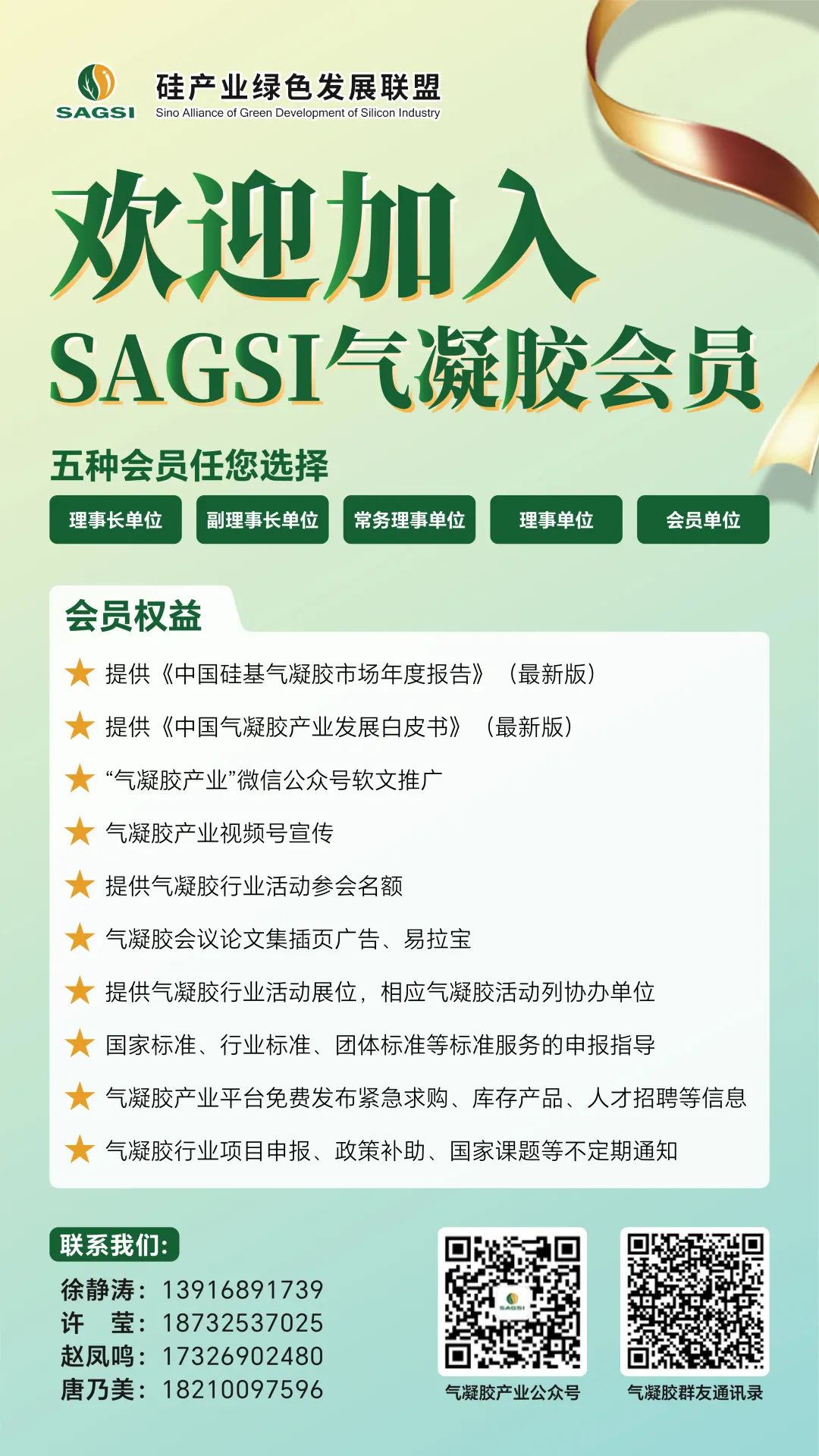

▼ Advertising Service Hotline ▼
TEL:Manager Zhao 17326902480 (WeChat same number)
[Disclaimer]Due to the wide range and large number of sources of articles published on this platform, if the copyright owner finds that this platform has reprinted their work without contact due to unclear author information or other reasons, please actively contact this platform and provide relevant proof materials, and this platform will handle it in a timely manner; the purpose of reprinting articles on this platform is to convey more information and does not represent this platform’s endorsement of their views or responsibility for their authenticity; if other media, websites, or individuals reprint or use, they must retain the “source of the manuscript” noted by this platform and bear legal responsibility.
[Copyright Statement]Text and images reprinted from the internet, copyright belongs to the original author, for learning and reference only, prohibited for commercial use. If there are any objections, please contact us for deletion.


